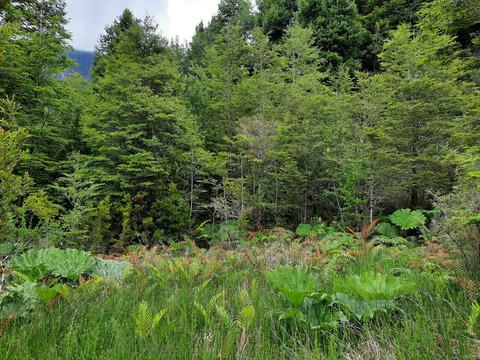当前位置:
X-MOL 学术
›
Funct. Ecol.
›
论文详情
Our official English website, www.x-mol.net, welcomes your feedback! (Note: you will need to create a separate account there.)
How to cope with drought and not die trying: Drought acclimation across tree species with contrasting niche breadth
Functional Ecology ( IF 5.2 ) Pub Date : 2021-06-12 , DOI: 10.1111/1365-2435.13861 Alex Fajardo 1 , Frida I. Piper 1
中文翻译:

如何应对干旱而不是尝试死亡:不同生态位宽度的树种之间的干旱适应
更新日期:2021-06-12
Functional Ecology ( IF 5.2 ) Pub Date : 2021-06-12 , DOI: 10.1111/1365-2435.13861 Alex Fajardo 1 , Frida I. Piper 1
Affiliation

|
- Worldwide drought events have been reported to cause tree growth decline and mortality, thus altering the carbon (C) balance of forest ecosystems. While most of the attention has been focused on the physiological mechanisms associated with drought-induced tree responses of a few species at specific locations, the ecological attributes of these species, like their niche breadth, may be also important in determining species’ sensitivity or resilience to drought. We postulated that wide-niche breadth tree species should be more drought-resilient than narrow-niche breadth species.
- Using the most severe 2015–2016 El Niño drought event in the last 70 years in Patagonia, we determined pre- and post-drought growth (BAI, basal area increment), C reserves in the form of non-structural carbohydrate concentrations (NSCs = starch and soluble sugars), wood isotope (δ13C, iWUE and δ18O) signalling and xylem anatomy (mean vessel diameter, mvd) in eight angiosperm tree species of contrasting niche breadth across a sharp precipitation gradient in southern Chile.
- All species responded in unison after the drought with a non-water-conservative response, maintaining BAI and NSCs, decreasing δ13C, and increasing both mvd and the soluble sugars:NSCs ratio relative to pre-drought time. Contrary to previous results reporting species-specific drought responses, our results show unequivocally a functional coordination of organisms’ vital traits associated with a non-water-conservative strategy, and a drought-induced acclimation based on starch conversion into soluble sugars in all of the tree species we examined, regardless of their niche breadth and habitat preference.
- We state that abiotic drivers such as drought may have selected similar interspecific responses provided that they operate at the community level rather than at the species level. These findings mark the need to revise current views about the ultimate interspecific functional coordination of organisms’ vital traits when facing more frequent and intensive drought events.
中文翻译:

如何应对干旱而不是尝试死亡:不同生态位宽度的树种之间的干旱适应
- 据报道,全球干旱事件会导致树木生长下降和死亡,从而改变森林生态系统的碳 (C) 平衡。虽然大部分注意力都集中在与特定位置的少数物种干旱引起的树木反应相关的生理机制上,但这些物种的生态属性,如它们的生态位宽度,在决定物种的敏感性或恢复力方面可能也很重要到干旱。我们假设宽生态位树种应该比窄生态位树种更耐旱。
- 使用巴塔哥尼亚过去 70 年中最严重的 2015-2016 年厄尔尼诺干旱事件,我们确定了干旱前后的增长(BAI,基础面积增量),非结构性碳水化合物浓度形式的碳储备(NSCs =淀粉和可溶性糖)、木材同位素(δ 13 C、iWUE 和 δ 18 O)信号传导和木质部解剖结构(平均血管直径,mvd)在智利南部陡峭的降水梯度中具有对比的生态位宽度的八种被子植物树种。
- 干旱后所有物种都以非节水反应一致响应,维持 BAI 和 NSCs,降低 δ 13 C,并增加mvd和可溶性糖:NSCs 比相对于干旱前的时间。与之前报告物种特异性干旱反应的结果相反,我们的结果明确显示了与非节水策略相关的生物体重要特征的功能协调,以及基于淀粉转化为可溶性糖的干旱诱导的适应。我们检查的树种,无论它们的生态位宽度和栖息地偏好如何。
- 我们指出,干旱等非生物驱动因素可能选择了类似的种间反应,前提是它们在社区层面而非物种层面发挥作用。这些发现标志着当面临更频繁和更严重的干旱事件时,需要修正目前关于生物体重要特征的最终种间功能协调的观点。



























 京公网安备 11010802027423号
京公网安备 11010802027423号